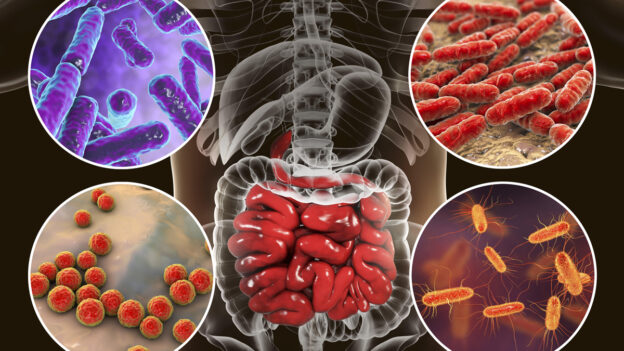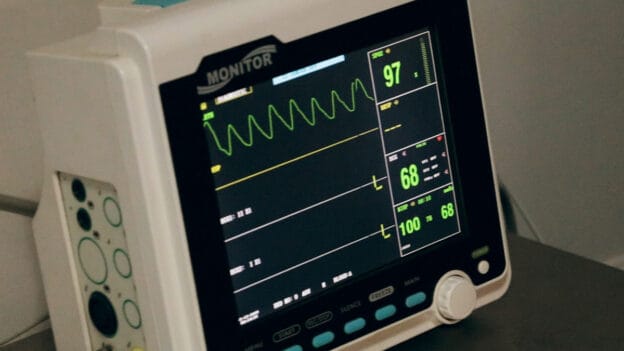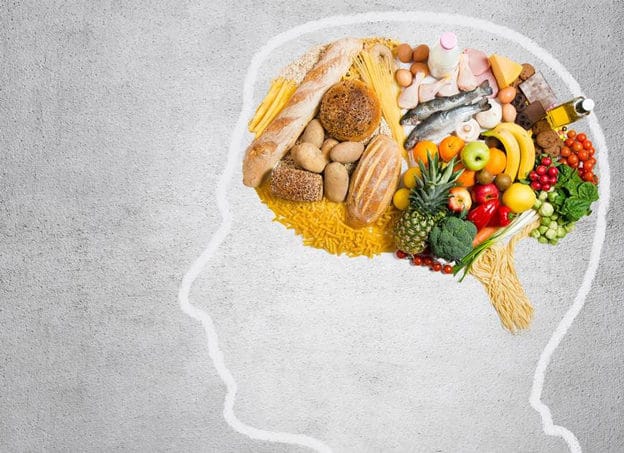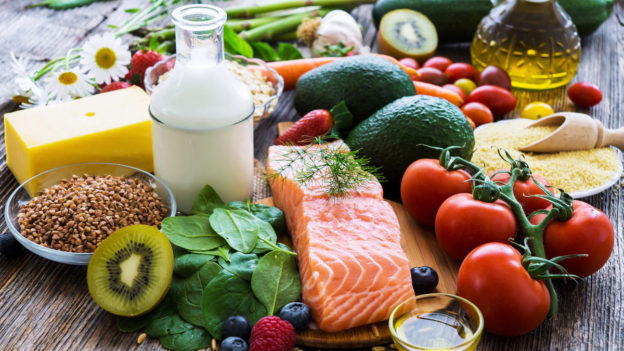Back in March, when the pandemic was new, I posted a comprehensive article on what we knew about the novel coronavirus and the disease it causes, Covid-19. A lot has happened since March, and we know a lot more. So here is part 2.
Long-term effect of COVID-19
Early on in the pandemic, we learned that COVID-19 was a short-term illness only fatal to the most vulnerable population — the elderly and those with pre-existing medical conditions. And all the actions were taken to protect those who came to be known as ‘the most vulnerable.’ While for younger and healthy people, this virus would just make them feel like catching a bad flu, which could be got through by self-quarantine.
In recent months, research and data have shown that the original beliefs were mistaken and that the younger and healthy population is still at great risk of severe complications from COVID-19 even without significant risk of death. Only till now, more attention has been given to the group of people called the “long-hauler” who have tested negative after recovery from COVID-19 in theory. But the truth is that they still suffer from various symptoms, which seems to have no consistent reason for this to happen.
It is much clearer now that besides the respiratory system, COVID-19 affects many different parts of the patients, including the energy level, heart, brain, gut, and even their mental status in a more extended period than expected.
Fatigue
As a common symptom in those presenting with symptomatic COVID-19 infection, fatigue has also been reported by over 50% of people who recover from COVID-19 even 10 weeks later, regardless of the seriousness of their initial infection, according to newly-released research published in November. Female gender and pre-existing depression/anxiety diagnosis are both the most common characteristics among people who experience prolonged fatigue after recovery.
Brain
A recent study found that one-third of hospitalized patients with COVID-19 seem to have impaired neurological, psychological, and cognitive functions, ranging from confusion to “brain fogs.” Hallucinations, delirium, short-term memory loss, strange touching sensations of the hands, or high sensitivity to light and sounds are typical symptoms that many “long-haulers” experienced after their recovery. Many others also have problems with their sympathetic nervous system that directs the body’s rapid involuntary actions or responses like heartbeats and breathing, which lead to erratic heartbeat and shortness of breath.
Heart
Besides the symptoms of irregular heartbeat caused by the impaired nervous system due to COVID-19, heart damage has been observed among many people who had recovered from COVID-19 no matter if they had underlying heart diseases or not. One JAMA Cardiology study used cardiac MRIs on 100 people who just recovered from COVID-19 found abnormalities in the hearts of 78% of research participants and “ongoing myocardial inflammation” in 60% of them. This observation has worried health care experts about a potential increase in heart failure incidence in the near future.
Gut
You may be surprised to see that COVID-19 can influence the gut. In fact, studies found that abdominal symptoms are a common presentation for COVID-19. Patients with COVID-19 had significant alterations in their gut biota through fecal testing characterized by the increase of opportunistic pathogens and the reduction of beneficial bacteria even after clearance of the SARS-CoV-2 and all COVID-related respiratory symptoms. This situation has also been observed among patients naïve to COVID-19 antibiotic therapy. The loss of beneficial bacteria species in the gut persisted in most patients despite clearance of the coronavirus, suggesting that the exposure to the coronavirus or hospitalization could be linked with a more long-lasting damaging effect on the gut microbiome.
Mental health
This pandemic has caused much mental stress in its disruption to social, work, and exercise routines. However, the feelings of stress, anxiety, and depression are often worse among current COVID-19 patients and the “long-haulers.” Recent studies show that many COVID-19 survivors are likely to be at greater risk of developing mental illness, and 20% of them are actually diagnosed with a psychiatric disorder within 90 days.
Their mental state has suffered because of the disease in consideration of their discomfort, disease status, and the difficulties of accessing medical services besides all the physical-isolation disruptions.
Then, the mental health status is further exacerbated because some of them cut themselves off from the community due to discomfort and the aim to protect others. Due to their self-isolation and physical discomfort, they are unable to do activities that they usually rely on to relieve stress, such as exercise, go out with friends, or meet family members.
According to the National Alliance on Mental Illness, being unable to work and feeling unproductive can also hinder mental health. Many patients have lost income and health insurance due to their disease status, which brings its own form of anxiety and insecurity.
Moreover, “medical gaslighting,” whereby physiological suffering is downplayed as a psychological problem such as stress or anxiety, has influenced many “long-haulers” due to the disbelief coming from people around them. Employers, Friends, and family members cannot believe they are sick for that long and accuse them of just being lazy. Even many doctors refused to believe that a “mild: COVID-19 can last for more than 2 weeks. Thus, mental health has become a severe issue that will affect the coronavirus-infected population in the long run.
It’s still not clear what happens to the “long-haulers” that lead to the reoccurring symptoms. It could be that infectious viruses can hide in some reservoir organs, which is missed by tests that use nasal swabs. The persistent fragments of viral genes may be triggering a violent immune overreaction. Or the immune system is stuck in the overactive state by COVID-19 even when the virus is gone.
The recovery from COVID-19 could be tentative, variable, and not guaranteed. Thus, it is crucial for us to protect ourselves well from the beginning by understanding how the virus spread and effective protections.
How does the coronavirus spread?
We now know a lot more about how we catch this thing. The coronavirus that causes COVID-19 is known to spread from person-to-person by respiratory droplets from coughing, sneezing, or respiratory secretions. However, health authorities have recognized that this virus can also be transmitted through tiny aerosols in the air exhaled by an infected person. Aerosols and droplets are different in sizes that aerosols are smaller-sized respiratory droplets with a diameter of smaller than 100 micrometers, while droplets are larger than 300 micrometers.
Due to the smaller size and lighter weight, aerosols can concentrate and stay in the air for a long time after an infected person breathes, speaks, shouting, singing, coughing, or sneezing indoors or in poorly ventilated spaces with the increased risk of contagion. People infected with coronavirus can spread the illness to others as much as 48 hours before they have symptoms. That is why effective protection against virus transmission is the key to COVID-19 prevention. For more information about the differences between aerosols and droplets, please see this article for more details.
What are the effective ways of protection?
Social distancing
Social distancing is also called “physical distancing,” which means keeping a safe space of at least 6 feet (about 2 arms’ length) between yourself and other people who are not from your household to reduce close contact between people. It is considered as an important part of measures to control COVID-19.
When possible, please avoid public places with too many people as possible such as restaurants, bars, gyms, and public transportations where social distancing can be hard to apply and follow.
Wash hands frequently
Hand washing is one of the best ways to protect yourself and your family from getting COVID-19 or any other transmissible diseases and prevent the spread of germs to others. The coronavirus can spread from other people or surfaces when you touch your eyes, nose, and mouth with unwashed hands. The virus can also be transmitted to you through food and drinks handled with unwashed hands. If you touched a contaminated surface, the virus could stick to your hands and live for up to 9 hours.
Thus, you should wash your hands anytime before touching your face, preparing meals, and eating, as well as anytime after blowing your nose, coughing, or sneezing, using the bathroom, handling garbage or pet waste, or touching anything from outside your house. The length of hand-washing should be long enough with a 20-second scrub each time. When soap and water are not readily available, alcohol-based hand sanitizer that contains at least 60% alcohol can be used as an alternative, which is not as effective as hand-washing .
Mask
According to the CDC, anyone age 2 and older should wear a mask in public settings and when meeting people from outside of their household. By properly covering the mouth and nose, masks can help block the release of exhaled respiratory particles into the air, along with the virus these particles carry. The correct and consistent way of wearing a mask for the best protection is to avoid touching the mask and choose the correct fit and types of masks. Studies have suggested that some masks are much better than others due to their ability to block droplets in different sizes.
Differences in Masks
Surgical Masks
A surgical mask is also known as the “medical mask,” disposable and made with polypropylene non-woven fabric. It can protect the wearer’s nose and mouth from contact with droplets, splashes, and sprays and filter out large particles in the air. Surgical masks can also protect others by reducing exposure to the mask wearer’s saliva and respiratory secretions.
N95 Masks
The N95 mask, as one kind of respirator, can offer more protection than a surgical mask, which is commonly used by healthcare providers. It is designed to filter 95% of particles from large to very tiny sizes when the wearer inhales. Some N95 masks have valves that make them easier to breathe through. However, the one-way valves release unfiltered air when the wearer breathes out. Thus, this type of mask can’t prevent the wearer from spreading the virus.
Cloth Masks
A cloth mask is designed to trap droplets that are released when the wearer talks, coughs, or sneezes help reduce the spread of the virus by people who have COVID-19 but don’t realize it. Cloth Masks should be washed regularly and dried completely dry at the highest temperature of a dryer after using. However, the choice of material and the number of layers can significantly influence the mask’s ability to filter the virus.
According to the recent study on the number of droplets emerging from the mouth during a speech, the fit, material, and layer of the mask decide its ability to prevent virus transmission. The results show that properly fitted N95, surgical, and polypropylene masks are the best, and layered cotton masks are a good alternative without access to any multi-layered polypropylene masks. In contrast, a bandana is not a great choice, and neck gaiters may be even worse than wearing no masks. For more information about the differences between masks, please see this article for more details.
COVID-19 Transmission
Maybe you think these 3 methods are all you need to watch out for to protect yourself from COVID-19. However, the truth is that a few other factors are crucial to transmitting the virus, including ventilation, contact time, activity, and environment. Those factors are the primary determinants of the risk of COVID-19 transmission based on the formula by Jones et al. in their recent published paper: volume of exposure + length of exposure = risk of COVID-19 transmission.
In the same article, Jones et al. also include a table that shows the risk of coronavirus transmission from asymptomatic people in different settings and for different occupation times, venting, and crowding levels. Besides, viral load of the infected person as well as people’s susceptibility to infection should also be taken into consideration of the virus transmission rate. For more information about factors that influence virus transmission rate, please see this article for more details.
Meanwhile, Harvard T.H. Chan School of Public Health has found that flying on an airplane has a much lower risk of catching COVID-19 than going to the grocery store or eating out. This is because of the volume of exposure to COVID-19 such as high-performing ventilation systems, mandatory face mask policies, disinfection of high-touch surfaces, health attestations from passengers and crew before flying, and education and awareness of COVID-19 are effectively controlled and limited.
Vitamin D and COVID-19.
Although there is inadequate evidence to recommend the use of vitamin D to prevent or cure COVID-19, more research has suggested that vitamin D may play a role in determining the disease severity of COVID-19.
According to Weir et al. that “the severity of COVID-19 can be determined by the presence of pneumonia, severe acute respiratory distress syndrome, myocarditis, microvascular thrombosis and/or cytokine storms, all of which involve underlying inflammation.” In order to fight against inflammation and viral infection, the human body will produce lymphocytes called Tregs, which have been reported to be low in many COVID-19 patients. Research also found that the level of Tregs can be elevated by vitamin D supplementation. Besides, low serum vitamin D level is closely related to an increased risk of pneumonia, severe acute respiratory distress syndrome, myocarditis, microvascular thrombosis, and cytokine storms.
What is an adequate level of vitamin D?
In order to prepare your body with its ability to fight inflammation, it is better to have enough vitamin D, especially during the current and upcoming seasons that lack adequate sun exposure (vitamin D can be synthesized by the skin under sun exposure). Although the adequate vitamin D level remains controversial, many studies suggest a level between 30 ng/mL to 60 ng/mL.
I hope this blog can help you understand the actual risks of COVID-19 and encourage you to avoid getting and spreading the virus.
Sources:
Zuo, T., Zhang, F., Lui, G., Yeoh, Y. K., Li, A., Zhan, H., Wan, Y., Chung, A., Cheung, C. P., Chen, N., Lai, C., Chen, Z., Tso, E., Fung, K., Chan, V., Ling, L., Joynt, G., Hui, D., Chan, F., Chan, P., … Ng, S. C. (2020). Alterations in Gut Microbiota of Patients With COVID-19 During Time of Hospitalization. Gastroenterology, 159(3), 944–955.e8. https://doi.org/10.1053/j.gastro.2020.05.048
Townsend L, Dyer AH, Jones K, Dunne J, Mooney A, et al. (2020) Persistent fatigue following SARS-CoV-2 infection is common and independent of severity of initial infection. PLOS ONE 15(11): e0240784. https://doi.org/10.1371/journal.pone.0240784
Weir, E. K., Thenappan, T., Bhargava, M., & Chen, Y. (2020). Does vitamin D deficiency increase the severity of COVID-19?. Clinical medicine (London, England), 20(4), e107–e108. https://doi.org/10.7861/clinmed.2020-0301
https://www.theatlantic.com/health/archive/2020/08/long-haulers-covid-19-recognition-support-groups-symptoms/615382/
https://www.theatlantic.com/health/archive/2020/06/covid-19-coronavirus-longterm-symptoms-months/612679/
https://montrealmom.com/lifestyle/health-wellness/covid-19/covid-19-needs-a-re-brand/
https://www.cidrap.umn.edu/news-perspective/2020/11/half-recovered-covid-19-patients-report-lingering-fatigue
https://www.heart.org/en/news/2020/09/03/what-covid-19-is-doing-to-the-heart-even-after-recovery
https://www.mass.gov/info-details/frequently-asked-questions-about-covid-19
https://english.elpais.com/society/2020-10-28/a-room-a-bar-and-a-class-how-the-coronavirus-is-spread-through-the-air.html
https://www.nytimes.com/interactive/2020/10/30/science/wear-mask-covid-particles-ul.html
https://kottke.org/20/08/study-shows-that-some-masks-are-much-better-than-others
https://www.livescience.com/coronavirus-survives-9-hours-on-skin.html
https://www.mayoclinic.org/diseases-conditions/coronavirus/in-depth/coronavirus-mask/art-20485449
https://www.boston.com/travel/coronavirus/2020/10/28/harvard-study-coronavirus-risk-flying
https://www.sciencealert.com/coronavirus-reveals-how-obesity-can-harm-our-bodies-in-the-short-term
https://www.sciencedaily.com/releases/2020/11/201103104734.htm









